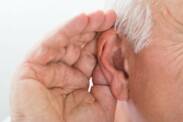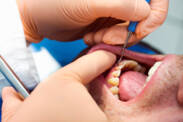Ear, nose, throat disorders

Ear, nose, throat disorders include
Ear, nose, throat conditions affect both the functionality and the individual tissues of these parts of the head, and can range from acute and chronic inflammation, through tumours, various types of cysts, polyps, ulcers or abscesses, to congenital or acquired pathologies that cause tissue deformities and also compromise the functionality of individual organs or parts of organs. These diseases are most often treated surgically or in ENT outpatient clinics.
In most cases, these diseases are not directly life-threatening, but some cancers, especially in the oral cavity, can spread to the larynx and cause respiratory limitation. However, a large proportion of the diseases are very amenable to outpatient management and are common inflammations that are managed locally and conservatively. Also, the symptoms associated with these diseases in the mouth, ears or throat can sometimes be related to the general condition of the body, for example, vitamin levels.
Construction of the throat
The pharynx is the front part of the throat, which is the gateway to the larynx and pharynx. While the larynx faces the airway, the pharynx is part of the digestive tube. The throat is covered with mucous membrane and its most important parts are the tonsils forming the so-called Waldayer's lymphatic arch, which has an important immune function in protecting the upper respiratory tract, and the upper part of the larynx, where the vocal cords are located, which is the phonetic organ of man used to produce sound and voice and is controlled by the human will.
The vocal cords are located in the larynx and are an organ consisting of the vocal cord muscles, vocal cord ligaments and vocal cord cilia. Due to the movement of the vocal cords and cartilages, sounds and tones can be made through the air that flows through the slit in the vocal cords. Since parts of the vocal cords are controlled by the striated muscles, one can freely determine the tone of the voice. The tone then passes through the upper cavities such as the oral cavity, larynx, pharynx, nasal cavity, and sinuses and acquires color.
The tonsils are found not only in the throat, where they are the palatine tonsils, but also in the nasopharynx and tongue, and together they form the Waldayer's lymphatic arch. All tonsils are part of the lymphatic system, which provides immune responses and are made up of soft lymphoid tissue. The palatine tonsils are at the back of the throat between the palatine arches, the nasal tonsils are located above them in the nasopharynx near the mouth of the Eustachian tube. Both are covered with a pale pink mucous membrane.
Diseases of the throat
The largest part of diseases of the throat are inflammatory diseases of the vocal cords and tonsils. The most common form of inflammation of the vocal cords is laryngitis, which is both acute and chronic, but the vocal cords are also affected by other types of chronic inflammation that can cause permanent loss of voice. In addition, various benign tumours such as papillomas or various cysts, ulcers, polyps or abscesses occur in the larynx and vocal cords. The most dangerous disease is cancer, which affects the vocal cords in its gliotic form.
The tonsils of the throat and nasopharynx can also be inflamed, sometimes with abscess or cyst formation. With inflammation, but also due to non-infectious causes, the tonsils also enlarge, which is accompanied by other pathological phenomena and problems. In addition to tonsillar hypertrophy or the formation of adenoid vegetations on the tonsils, the tonsils are also affected by various types of tumours, abscesses, carcinomas, cysts or other deposits that cause obstruction on the tonsils.
While most inflammatory diseases of the tonsils and vocal cords can be resolved mostly with local treatment in the form of antibiotics, some types of hyperacute inflammation also need to be addressed surgically, especially if the tonsils are enlarged or air passage through the larynx is restricted, as these can be life-threatening conditions. Tumours, especially of the carcinoid type, are also problematic, as they grow into other tissues and sinuses and can also cause death.
Anatomy of the oral cavity
The oral cavity is the entrance part of both the respiratory and digestive systems. Within the oral cavity are the jaws, which border it from above and below, the lips, which are the gateway to the oral cavity, the palate, which together with the gums forms the inner mucous membrane and lining, the tongue, and the dentition, which is made up of the teeth used to chew food for the digestive system. The salivary glands are also important for digestion, facilitating the chewing of food and coating it with saliva containing enzymes important for digestion.
The inside of the mouth is made up of a multi-layered epithelial lining called the mucosa, which covers both the palate and the sides and bottom of the mouth. The mucosa is also found on the gums, which are the basis for the dentition, which they fix in the periodontium, or tooth bed and tooth fixation system. In addition, the tongue also has an important function, which aims to play a supporting role in the production of sounds, but it is also richly innervated and contains taste nerve receptors.
The lips are the gateway to the oral cavity and are vascularized and covered by three types of epithelium, which also have the role of protecting the entrance to the oral cavity and have mimic functions related to emotions and sound production. The salivary glands, whether large or small, are essential for digestion, producing secretions important for coating food and producing enzymes necessary for digestion of food in the digestive system. The teeth forming the human dentition are used to chew food.
Diseases of the oral cavity
Diseases affecting the oral cavity include those affecting the interior of the cavity as well as the surrounding tissues. Within the diseases affecting the tongue or gums, the most common are various types of inflammation, such as glossitis or abscessitis on the tongue, as well as hypertrophy or atrophy of particular areas of the tongue or gums, and a common disease affecting the mucous membranes of the inner oral cavity, including the lips, are aphthae, which arise from prolonged irritation of the mucous membranes and affect not only the tongue, but virtually all the mucous membranes in the oral cavity.
Dental diseases, whether they are common types of tooth decay or diseases of the tooth fixation apparatus, anomalies regarding temporary and permanent dentition and various disorders of the arrangement, size or functionality of the teeth, all affect the oral cavity as well. Within the oral cavity there are also various diseases of the soft and hard tissues of the palate, such as various cysts, tumours, cancers, or congenital defects or disorders, such as cleft palate and lip, which may affect only the lips or both lips and palate.
The jaws are paired bones that surround and delimit the oral cavity from the surrounding area on the upper and lower sides. Diseases in this area involve both the lower and upper jaw, as well as the temporomandibular joint, and are either inflammatory diseases, abnormalities and functional defects, or malocclusion of the jaws, or other diseases also related to the dentition and surrounding structures. Similarly, the salivary glands, whether large or small, are affected by various inflammations, obstructions, tumours, cysts, salivation disorders, problems with secretion, atrophy or hypertrophy of the salivary glands, or various abscesses.
Composition and parts of the ear
The ear is an auditory organ whose purpose is to pick up sound and transform it through nerve fibres into a signal that travels to the brain. The ear is a sensory organ that consists of the outer ear, middle ear and inner ear, with the middle ear connected to the Eustachian tube, which connects the middle ear cavity to the nasopharyngeal cavity, and the inner ear containing the positional-balance nerve, which transmits signals from the ear and the balance organ to the brain.
The outer ear is composed of the auricle and the ear canal, the latter being covered with skin, and while the auricle is made up of cartilage, the tube of the ear canal has both a cartilaginous and a bony part. The aim is to direct sound towards the middle ear. In it is a system of air-filled cavities. The middle ear starts with the pubis, the auditory ossicles are connected to this, which transmits the sound signal to the inner ear and amplifies it, and at the same time the Eustachian tube is connected here.
Its purpose is to drain fluid from the ear and equalize the pressure in the middle ear with the surrounding pressure. Behind the middle ear is the inner ear, which is made up of the bony labyrinth and the cochlea, and the vestibular apparatus, which is responsible for holding the body's balance, is also located here. From the inner ear, both sound and positional balance signals are carried directly to the brain via the positional auditory nerve, which is made up of two plexuses of nerves, where they are processed.
Diseases of the ears
Each part of the ear can be affected by different ailments and diseases. The outer ear is affected, for example, by deformities of the auricle or ear canal, various ulcers, furuncles, carbuncles, abscesses, cellulitis of the skin of the outer ear, exostosis, perichondritis, but most often by inflammation or hardening of the cerumen due to insufficient or poor hygiene. The inflammations are acute and may be of both infectious and non-infectious origin, affecting either the auricle or the tympanic membrane.
The middle ear is also affected by both purulent and non-purulent inflammations, some acute, others chronic, affecting either the mucous membrane of the inner ear or the eardrum. In addition to inflammation, perforations of the tympanic membrane, permanent obstruction of the auditory tube or, conversely, excessive opening of the Eustachian tube, inflammation directly in the Eustachian tube and various types of cysts located in the middle ear, such as the very common cholesteatoma, are also related to the inner ear.
As far as the inner ear is concerned, there are problems with either the auditory processing or the balance system. There are disorders of the vestibular apparatus or nerve, various types of vertigo, malignant and benign tumours affecting both the balance system and the positional auditory nerve, such as neurinoma, and there may also be pathological syndromes such as Lermoyez syndrome or paraxysmal vertigo, and disorders of the labyrinth and individual nerves are also common.


















